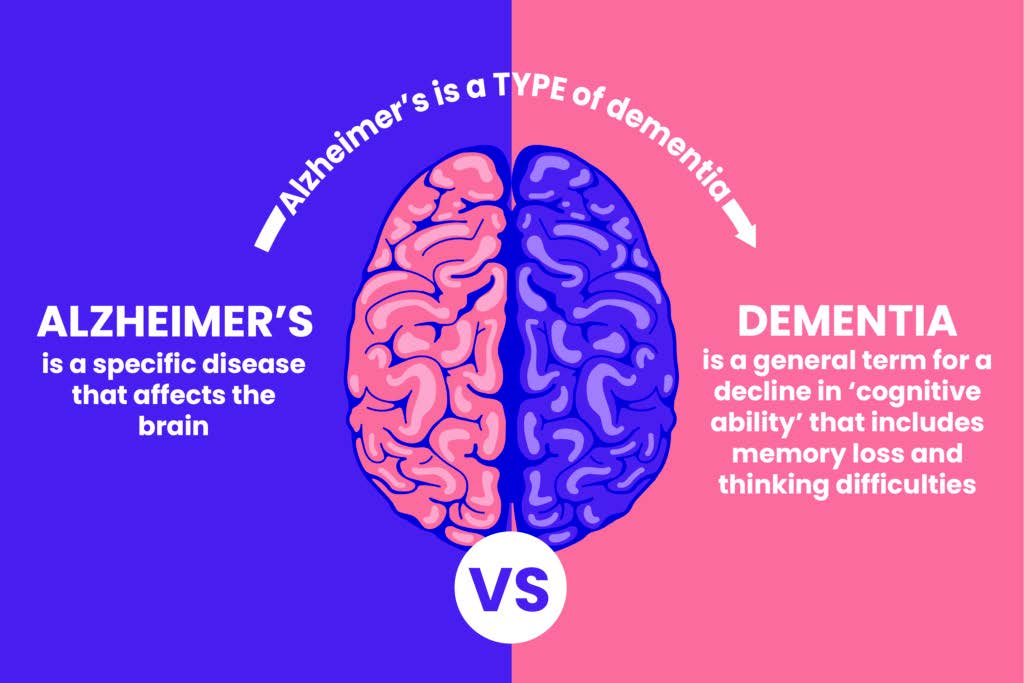LAWENICA EVANS, DROT, LOTR, & AND CINDY PAYTON, LOTR, MHS, C/NDT.
Have you ever left the house and forgotten your wallet, your glasses, your phone, or all the above? You may have walked into a room to retrieve something only to forget what you wanted. Memory may decline a bit as we age, but it is usually occasional and causes only minor inconveniences.
Have you ever left the house and forgotten your wallet, your glasses, your phone, or all the above? You may have walked into a room to retrieve something only to forget what you wanted. Memory may decline a bit as we age, but it is usually occasional and causes only minor inconveniences.
However, memory loss that interferes with a person’s ability to perform everyday activities is not an expected part of aging. This may be the first sign of Alzheimer’s disease, one of many types of dementia, which causes loss of memory and problems with thinking and reasoning.
In 2020, it was estimated that there were 92,000 people in Louisiana diagnosed with Alzheimer’s disease with an expectation of 110,000 people diagnosed by 2025 (Alz.org). People who have been diagnosed often continue to live at home with a caregiver or at a loved one’s home who provides care.
Individuals with dementia may benefit from having an Occupational Therapist (OT), a licensed professional trained in helping people maintain their highest level of function for as long as possible.

When working with clients with dementia and their caregivers, the goal of occupational therapy is to improve the quality of life for both the client and caregiver.
During an initial visit, the OT assesses many areas including a client’s physical function, ability to walk and move themselves safely, cognitive skills, ability to perform self-care tasks such as feeding, dressing, bathing, and grooming, bowel and bladder incontinence, and safety awareness.
Hearing and vision assessments may be recommended as well. The OT will also interview the caregiver about their concerns, needs and goals related to providing care to the client.
After evaluating the client, the therapist creates goals that are individualized and meaningful to the client and the caregiver. Treatment may focus on simplifying daily activities, managing behaviors, modifying the home environment, establishing daily routines and good sleep patterns, communication strategies, and caregiver education. Ensuring the client’s safety in the home is a primary focus of occupational therapy.
In the early stages of dementia, a client may be able to learn to use memory aids such as calendars, memory journals, cell phone reminders, and medication planners. The OT may recommend modifying the home environment by organizing most frequently used items, reducing visual and physical clutter, labeling cabinets, and reducing stimulation caused by electronic appliances such as a radio or television. People with dementia often develop difficulty with decision making, so an OT may recommend limiting choices by having a caregiver offer only two options. For example, “Would you like to wear the red shirt or the blue shirt?”
Safety and behavior issues may present challenges when caring for a person with Alzheimer’s disease. Wandering is a common behavior that can be addressed in various ways. Often, signage is enough to deter someone from exiting the home such as placing a “STOP” or “Employees Only” sign on the outer doors. The OT may also recommend installing slide locks at the top of the door, door chimes, or motion sensors as a tool to alert caregivers. Medical identification bracelets with the client’s name and caregiver contact information are an additional safety measure.
Maintaining schedules and routines typically helps people with dementia stay calm and lessen their frustration. This can include having a set bed and wake time, eating meals in the same chair at the same time each day, and keeping daily routines as consistent as possible. An advance warning of visitors, doctor’s appointments, or anything out of the ordinary routine may also be helpful to a person with Alzheimer’s disease.
It can be frustrating when a person exhibits behaviors like refusing a request to get dressed or take a bath. Often, leaving the room, returning five minutes later, and asking the question again will result in a different response. OTs may educate caregivers on communication strategies such as speaking in soft tones, being aware of non-verbal cues like fidgeting, giving instructions and information in small pieces and allowing extra time to respond, making eye contact with the person before speaking, not engaging in arguing, and being patient with answering the same question many, many times.
There is no cure for Alzheimer’s disease, however, support is available. Contact your physician to request an occupational therapy referral. For more information and resources, visit the Alzheimer’s Association website, www.alz.org, or call the local Alzheimer’s Association Louisiana Chapter at (318) 666-8400.


LaWenica Evans, DrOT, LOTR, and Cindy Payton, LOTR, MHS, c/NDT, are Instructors of Occupational Therapy at LSU Health Shreveport School of Allied Health Professions.









